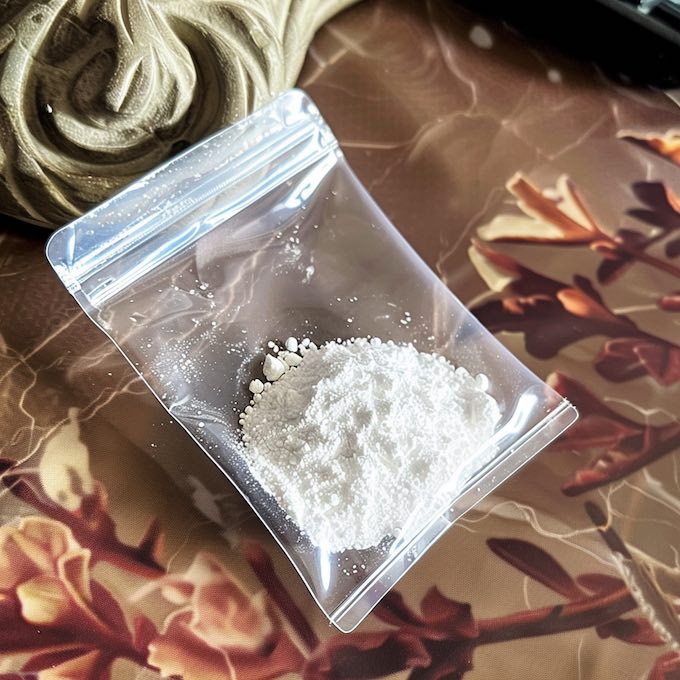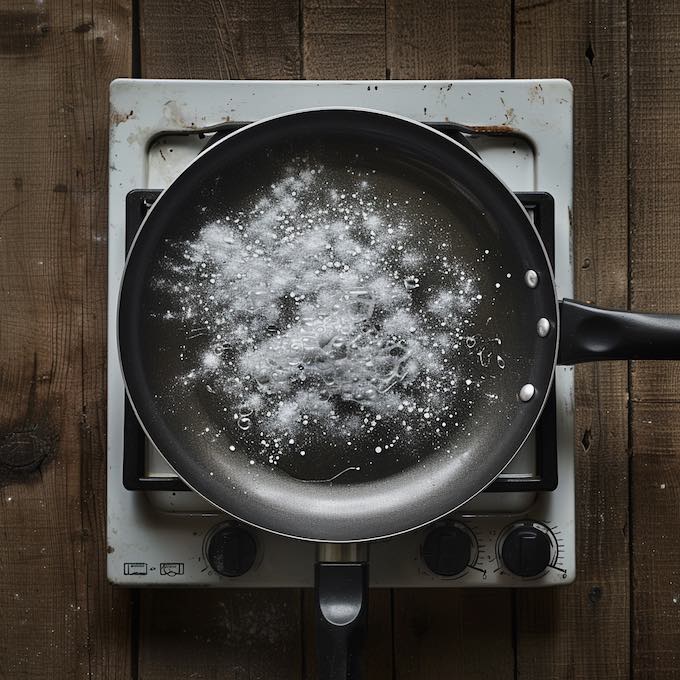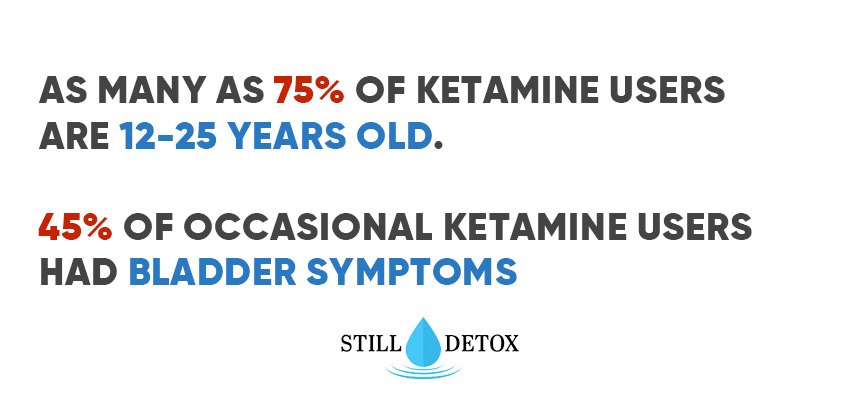The number of people suffering from ketamine bladder is on the rise, with experts noting an alarming increase in bladder issues among young people due to chronic ketamine use.
- Known on the street as Special K, it usually comes as a crystalline powder or liquid.
- Chronic usage affects the lining of the bladder and can shrink it.
- This can lead to frequency of needing to urinate, infections, bleeding, blockages, and incontinence.
Cocaine, MDMA, and LSD can end up damaging people and some can become addictive, but it appears none of these party drugs have the ability to wreck the body or leave users mentally stranded in the way that ketamine does.
When someone offers you ketamine at a festival, or if your friends are using it, think twice. Read about the consequences of using it, even if you only use it occasionally, from one festival to the next.
What is Ketamine Bladder Syndrome?
“Ketamine bladder,” also known as K bladder, is the ulceration of the inside lining of the bladder. Initially, people experience discomfort in their bladder area, and as the condition worsens, they begin urinating more frequently, sometimes every five or ten minutes. As the ulceration progresses, it becomes painful to urinate, and they may even start peeing blood.
- Ketamine-Induced Cystitis (KIC)
- Ketamine-Associated Ulcerative Cystitis
- Ketamine Bladder Syndrome
These terms all describe the bladder damage resulting from recreational ketamine use.
The only solution to K bladder is surgery, which in severe cases, can mean the removal of the bladder. Young users of ketamine are facing serious future health issues, including potential kidney failure that might require dialysis or a kidney transplant.
Most recreational users of ketamine are young, with up to 75% between the ages of 12 and 25, storing up problems for their future health.
What causes Ketamine Bladder Syndrome?
Your bladder is a sac-like organ located behind the pelvic bone that stores urine. Normally, it’s about the size of a grapefruit but can expand much larger when it’s full.
When you use ketamine, it and its breakdown products, known as metabolites, can enter the bladder. There, the ketamine metabolites harm the epithelial cells lining the inside of the bladder. These cells, which are shaped like umbrellas, have the main job of keeping urine inside the bladder and preventing it from leaking into other parts of the bladder wall.
However, if these cells are damaged by ketamine, they can’t hold the urine properly. This allows urine to leak through and reach the deeper layers of the bladder wall, which can cause further damage and lead to various symptoms.
Long-term use of ketamine can also damage the gallbladder, which contains epithelial cells and growing evidence suggests it can damage several other organs as well.
What are the symptoms?
The symptoms of ketamine bladder syndrome can vary from early signs to more severe effects as the condition progresses. Here’s a list of the symptoms:
Early Symptoms
Urinary frequency: Needing to urinate more often than usual.
Urinary urgency: Feeling a sudden, intense urge to urinate, even when the bladder isn’t full.
Pelvic pain and pressure: Discomfort or pain behind the pelvic bone.
Advanced Symptoms
Incontinence: Involuntary leakage of urine.
Hematuria: The presence of blood in the urine, which may cause the urine to appear brownish-orange.
Reduced bladder capacity: The bladder may become stiff and unable to expand due to damage to the cells in the bladder wall.
Erectile dysfunction (in men): Difficulty in getting or maintaining an erection.
These symptoms can start within a month of beginning ketamine use and get worse over a year.
According to the study published in Science Direct, one serious complication that can develop from ketamine abuse is hydronephrosis.
Hydronephrosis is a condition where one or both kidneys become swollen due to a buildup of urine. This can cause pain in the flank (side) area.
Importantly, the study found that the urinary tract symptoms associated with ketamine abuse may persist for up to a year even after the person stops using the drug.
The effects can linger long after the drug use has stopped.
K-Cramps: The Deceptive Pain Relief of Ketamine
The K-cramps is a really intense spasm on the abdomen muscles, which can sometimes last for 30 seconds, but sometimes up to ten minutes. It puts people in excruciating pain and then it will just wear off.
Ketamine is known for its pain-relieving properties, which can be misleading. Some individuals with ketamine bladder disorder initially didn’t recognize the source of their bladder pain.
Ironically, they used more ketamine to alleviate the discomfort, not realizing that this was exacerbating the problem. This increased usage led to further bladder damage and, ultimately, more intense pain over time.
In some extreme cases, users continue to abuse ketamine daily even after having their bladders surgically removed due to damage from the drug.
Despite knowing the severe health risks, including the potential for fatal consequences, their dependence on ketamine can be so strong that they continue using it.
Injecting Ketamine: A Protection from K Bladder?
Ketamine typically starts as a liquid that is heated (“cooked”) on a stove or in a microwave to form crystals. These crystals are then crushed into a powder for snorting. There’s a common belief that cooking ketamine lessens its harmful effects and helps prevent K bladder, a serious urinary tract condition.
However, some individuals choose to inject ketamine, thinking it might sidestep the toxic effects on the urinary system associated with other methods of use.
It’s important to understand that regardless of the administration method—whether it’s snorting or injecting—ketamine can still lead to irreversible bladder damage.
Is the damage Irreversible?
The bladder damage caused by ketamine is irreversible, and the symptoms may only be reversed by stopping ketamine use. This condition can severely damage other organs and potentially lead to death. It’s critical to recognize the need to stop using ketamine. If you experience symptoms like frequent urination, severe abdominal cramps, or bloody urine, seek emergency medical help immediately.
How much ketamine can cause K Bladder?
It’s tough to pinpoint a safe amount of ketamine because it affects everyone differently. Ketamine bladder damage is a relatively new problem, first identified in 2007, and most studies have looked at people who used large amounts daily for a long time. But even people who use ketamine occasionally and in smaller amounts can experience bladder issues.
According to NIDA’s research; about 27% of occasional ketamine users had bladder symptoms, and most of them used the drug just a few days each month.
The bottom line is that using ketamine more often and in larger amounts raises the risk of bladder damage. There’s no clear safe limit.
The Severe Impact of Ketamine Addiction
Tolerance is known to build quickly, so users increasingly need more and more to feel an effect. People use it every day, escalating amounts, grams and grams a day, and getting into terrible trouble in a way that they didn’t really think would happen with ketamine. This escalating use not only leads to severe health problems but also traps users in a cycle of dependency that is difficult to break.
Unlike heroin and crack, which are widely recognized for their addictive potential and destructive impacts, Special K, or Ketamine, often doesn’t get the same level of negative attention. However, the reality is that chronic use of Ketamine can severely damage both physical and mental health and may even lead to death.
It’s crucial to seek help before the addiction worsens. Recovery is possible, and overcoming Ketamine addiction is most effectively managed through inpatient treatment programs.
If you or someone you know is struggling with ketamine addiction, don’t hesitate to reach out to our toll-free helpline for information on specialized treatment options.
Call us now at 556-2677 if you are feening for Ketamine.
Sources:
National Library of Medicine Ketamine bladder syndrome: an important differential diagnosis…
BJUI Recreational ketamine: From pleasure to pain
National Library of Medicine Changes to the bladder epithelial barrier are associated with ketamine-induced cystitis










